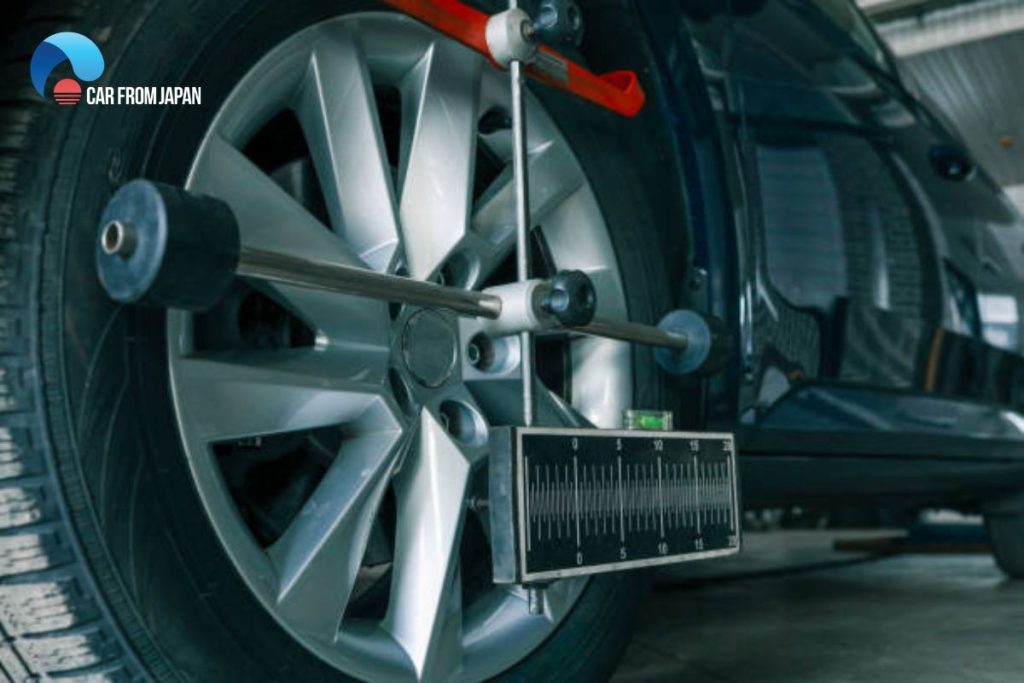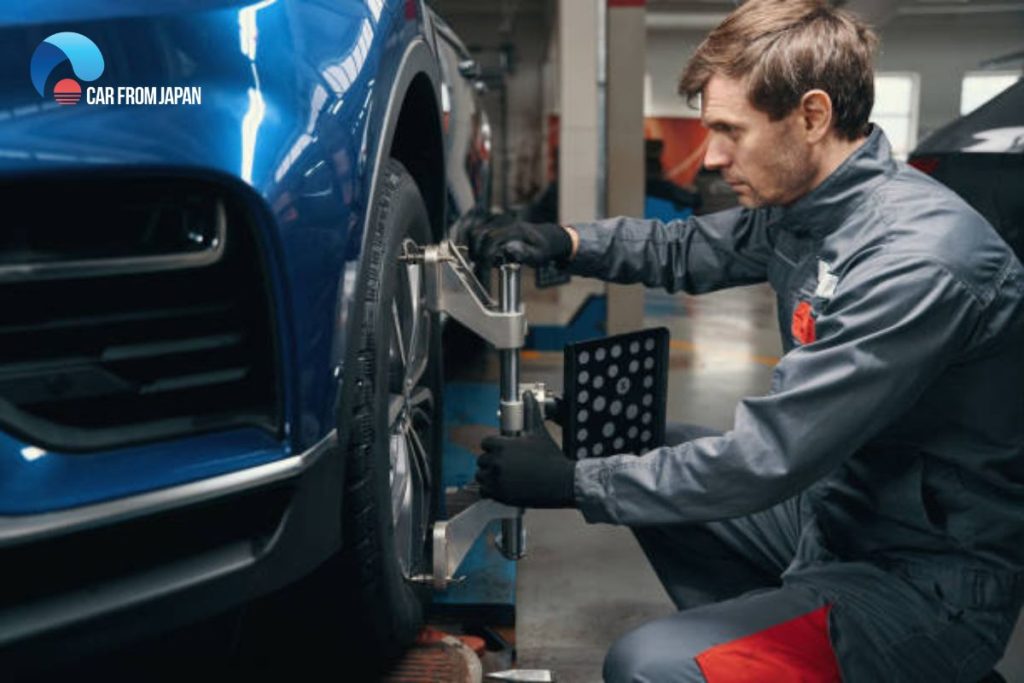Ever been talking to your mechanic, and they throw out terms like ‘front end alignment‘ or ‘wheel alignment,’ leaving you scratching your head? You’re not alone! It’s quite common for people to use these terms interchangeably. Still, there’s actually a significant difference that can impact everything from your tires to how your car handles on the highway. Let’s clear up the confusion between the front-end alignment and wheel alignment in this discussion:
Contents
Difference Between Front End Alignment vs Wheel Alignment
If you notice that your car keeps veering right or left while driving, or vibrations in the steering wheel, you may need a vehicle alignment, but what kind of service do you need: just a front-end alignment or wheel alignment? Whether you’re a car enthusiast or simply want to understand more about your vehicle’s maintenance, this information will provide valuable insights into the science behind wheel alignment and front-end alignment:
Understanding wheel alignment
When a mechanic talks about “alignment” these days, they’re almost always referring to a wheel alignment – and for most modern cars, that means a four-wheel alignment. Think of it as making sure all four of your car’s tires are pointing in the exact right direction. The goal is to get all your wheels perfectly parallel to each other and standing straight up and down against the ground.
After a certain running distance, all the four-wheelers are supposed to undergo the wheel alignment operation. What is wheel alignment? Wheel alignment involves a mechanical adjustment of several complex suspension angles, including camber, caster, and toe angle, to ensure that your wheels are in the correct position. Let’s find details about the 3 main angles we just referred to:
- Imagine looking at your car from the front. Is the top of your wheel leaning inward or outward? That’s camber. You want it just right so the whole tire sits flat on the road.
- Caster is the forward or backward tilt of the steering axis, as viewed from the side of your vehicle, affecting balance and steering stability.
- Toe refers to the direction the tires point relative to each other when viewed from above, impacting how evenly your tires wear.
When all these angles are set correctly across all four wheels, your car drives like it should. This isn’t just about comfort; it helps your tires last longer, keeps your car going straight, and can even save you a bit on gas.
If your car is out of alignment, you may experience irregular tire wear, handling problems, or a crooked steering wheel. A wheel alignment adjustment can correct these problems and increase fuel economy, prolong tire life, and ensure driver assist systems continue functioning as intended.

Front-end alignment: What does it mean?
Now, what does a front end alignment do? As its name suggests, the front-end alignment is a maintenance service that focuses on adjusting the alignment of the front wheels or called 2-wheel alignments, so that they run parallel to the center of the vehicle.
This is achieved by adjusting the suspension components to the proper angles. The operation ensures that the front wheels rotate in unison and travel in the same direction for optimal performance of the suspension system.
Technicians can choose to perform just a front-end alignment instead of a four-wheel alignment. However, even if your car doesn’t have an independent suspension system, the front-end alignment may be most suitable for older vehicles with less advanced suspension systems. While “front-end alignment” is still used as shorthand sometimes, it can be misleading because it often doesn’t address the whole picture for modern vehicles, as it excludes the rear angles of the wheels.
When do you need each (or which one)?
So, when should you be thinking about alignment? And which kind of service will you need? From our side, we always recommend that you do a full (four-wheel) alignment for your car instead of just front end alignment.
When do you need a wheel alignment?
Alignments should be done yearly, along with tire rotations as needed. Always do an alignment when new tires have been installed:
- After getting new tires: This is a must to make sure your new rubber wears evenly.
- After hitting something hard: A big pothole, a curb, or any kind of fender bender can knock things out of whack.
- If your steering wheel isn’t straight: If you’re driving straight but your steering wheel is off-center, you definitely need one.
- Your car pulls to one side: You have to constantly correct the steering to keep it going straight.
- You notice uneven tire wear: If the inside or outside edge of your tires is wearing down much faster than the rest, that’s a classic sign.
- After any major steering or suspension work: Replacing tie rods, ball joints, control arms, or even struts means an alignment is necessary.

When do you need a front end alignment?
Pretty much only if you have an older vehicle that genuinely doesn’t have adjustable rear suspension. In almost all other cases, especially for any car built in the last few decades, you’ll need a full four-wheel alignment to get things truly squared away. Trust us, it’s worth it.
A front-end alignment is also sometimes an option when you notice uneven tire wear or handling problems that you are sure are only coming from the front tires. It’s a cheaper and faster service because the mechanic only focuses on the two front wheels. However, it’s very important to know that most modern cars have a rear suspension that can also be adjusted.
Because a front-end alignment ignores the rear wheels, it’s not a full fix and won’t solve problems that start in the back of the car. For this reason, a full four-wheel alignment is almost always the better choice. You should only consider a front-end alignment after a minor front-end repair, or if a full alignment is simply not an option.
To put it simply, here’s how the two services compare:
| Key difference | Wheel alignment | Front end alignment |
| Number of wheels adjusted | 4 | 2 |
| Cost | $100 to $175 | $65 to $100 |
| Effectiveness | More effective | Not fully solve the problem, especially if the rear wheels are misaligned. |
| Best use | Always the right choice | Only be considered if a car’s rear suspension is not adjustable. |
Final Thoughts
Don’t let the different names confuse you. The most important thing to remember is this: a wheel alignment is the complete service that your car needs to handle correctly and wear your tires evenly. A front-end alignment is just a partial fix. By asking for a full wheel alignment, you ensure your car is getting the best care possible.
Don’t miss out on this opportunity to enhance your knowledge and become a more informed driver. Hopefully, this article will help you unlock the secrets of wheel alignment and front-end alignment!



